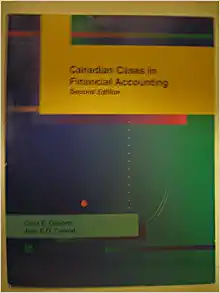Question
Using unique ID 2183 INTRODUCTION This is the second part of a three-part project that assesses your knowledge of financial accounting and the accounting cycle.
Using unique ID 2183
INTRODUCTION
This is the second part of a three-part project that assesses your knowledge of financial accounting and the accounting cycle. In the first part, you were required to prepare journal entries, T-accounts and a trial balance for a variety of transactions for a new corporation. In part 2 of the project, you are asked to analyze adjusting entries and to make adjusting journal entries, T-accounts and an adjusted trial balance. Prior to starting part 2, make sure that you correct any errors made in part 1.Each part is dependent on the prior part to be completed.
BACKGROUND
After graduating, you have decided to open your own business as a corporation.The project is a company calledABC, Inc.Since you have taken a financial accounting class as part of your undergraduate degree, you have decided to save the money make accounting work.This includes understanding that all transactions are recorded properly in appropriate journals, T-Accounts and trial balances and prepare the the financial statements.To accomplish these goals, you must have a full understanding of the accounting cycle.
REQUIREMENTS
1.Create necessary Excel spreadsheets. Handwritten journals, T-accounts, or trial balance will not be accepted nor will any other file format.You will be assigned a unique 4-digit ID number that will be used throughout this project.Several of the transactions will require you to multiply your ID Number by a specific amount.This is how each project will have unique results.When using Excel, formulas must be used when possible and numbers should not be hardcoded.For instance, the transaction occurring on June 1 is ID X 500.Do not just solve this using your calculator and type in the answer.In Excel, you must have a formula such as "=500 x ID".There should be only formulas on the T-accounts and trial balance.
2.All dollar figures should be rounded to thenearestdollar with no decimals included.Make sure that your submission is formatted with dollar signs and commas and that no decimals are given.
PROJECT DETAILS
This project is an extension of Part 1, so just like in the real world the previous transactions do not go away.Review your transaction analysis, journal entries, T-Account postings and Trial Balance for accuracy. You start from where that part ended and add this information.
The following transactions are adjusting entries that need to be booked as of June 30, 20XX:
1.The money borrowed on June 2 is an interest-only loan with a 10 percent interest rate.The interest accrues each month even though it is only paid quarterly with the first payment not due until September 2, 20xx.Compute interest on a monthly basis not by number of days.
2.The building has no salvage value and is depreciated on a straight-line basis over 30 years.The equipment has no salvage value and is depreciated on a straight-line basis over 10 years.
3.One month of insurance coverage has expired.Assume an entire month's worth of insurance has expired not only the number of days between payment and end of June.
4.There is $8,500 of inventory left in storage at the end of the month and there was no inventory used for internal purposes.
5.The last payday was June 28th(employees were paid for working that day).Wages accrue at $200 per day.
1.make an adjusting entries in good form based on the above information. Create separate adjusting journal entries from your part 1 journal entries.
2.Post the adjusting journal entries into T-accounts (make sure you have a total amount for each account and that the T-accounts have Part 1 and Part 2 amounts).Remember t-accounts do not go away.Any T-account from Part 1 whether it was affected or not needs to be included.
3.make an adjusted trial balance.
Step by Step Solution
There are 3 Steps involved in it
Step: 1

Get Instant Access to Expert-Tailored Solutions
See step-by-step solutions with expert insights and AI powered tools for academic success
Step: 2

Step: 3

Ace Your Homework with AI
Get the answers you need in no time with our AI-driven, step-by-step assistance
Get Started


